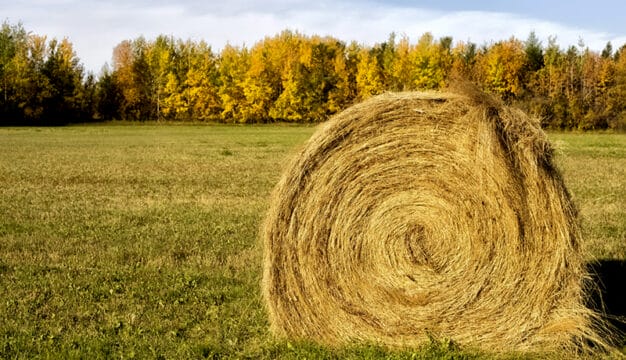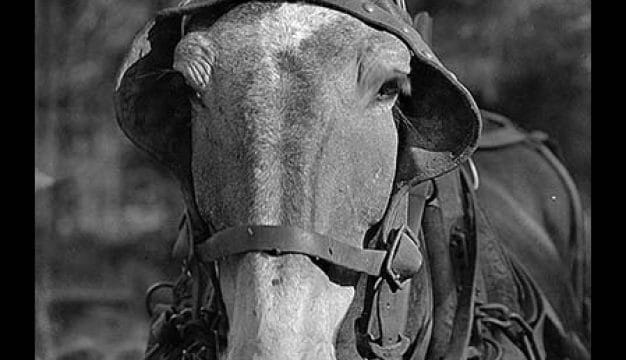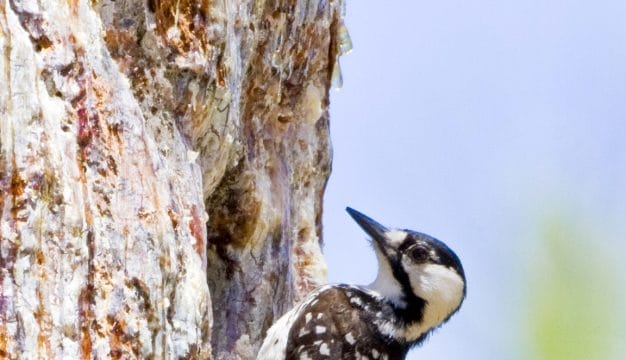Mammals of Alabama
Alabama is home to 62 native mammal species, of which more than half are either rodents or bats. The diversity of Alabama spans common mammals, such as opossums and hispid cotton rats, and some of the rarest species in North America, such as the Perdido Key Beach Mouse. Six species are exotics that have been introduced to the state, and four mammal species are now no longer found in the state. Mammals are defined by three major characteristics. First, they have skin that is covered at least partially with hair; second, they nourish their young with milk manufactured by the mother; and third, they maintain a consistent and regulated body temperature, regardless of the environmental temperature.
Rodents (Order Rodentia)
 Alabama Beach Mouse
Rodents are the most well-represented order of mammals in Alabama, owing to their varied diet and efficient body structure. Specifically, they have two continuously growing incisors that the rodent wears down through gnawing. Most rodents also reproduce fairly quickly, having several litters per year that yield between two and 12 young. With the exception of squirrels and chipmunks, most rodents in Alabama are nocturnal. Rodents are also successful because they are able to exploit a variety of different habitats, including urban areas. There are 22 rodent species that reside in Alabama. The Perdido Key beach mouse and Alabama beach mouse are two of North America’s most threatened rodents because their habitat is being rapidly destroyed by development along the Gulf Coast.
Alabama Beach Mouse
Rodents are the most well-represented order of mammals in Alabama, owing to their varied diet and efficient body structure. Specifically, they have two continuously growing incisors that the rodent wears down through gnawing. Most rodents also reproduce fairly quickly, having several litters per year that yield between two and 12 young. With the exception of squirrels and chipmunks, most rodents in Alabama are nocturnal. Rodents are also successful because they are able to exploit a variety of different habitats, including urban areas. There are 22 rodent species that reside in Alabama. The Perdido Key beach mouse and Alabama beach mouse are two of North America’s most threatened rodents because their habitat is being rapidly destroyed by development along the Gulf Coast.
Bats (Order Chiroptera)
 Hoary Bat
Bats are the only mammals that can truly fly. They locate food and obstacles in their environment by using a sonar-like system called echolocation, whereby the bat emits supersonic sounds that bounce off objects and are picked up by the bat’s ears. The bat then combines these returning sounds to form a mental picture of its surroundings. Alabama is home to 16 bat species, all of which are insectivores belonging to the suborder Microchiroptera. Bats greatly benefit the environment by eating hundreds of thousands of insects annually.
Hoary Bat
Bats are the only mammals that can truly fly. They locate food and obstacles in their environment by using a sonar-like system called echolocation, whereby the bat emits supersonic sounds that bounce off objects and are picked up by the bat’s ears. The bat then combines these returning sounds to form a mental picture of its surroundings. Alabama is home to 16 bat species, all of which are insectivores belonging to the suborder Microchiroptera. Bats greatly benefit the environment by eating hundreds of thousands of insects annually.
All but one of the Microchiropteran species in Alabama are “common bats,” meaning that they are small and insectivorous (family Vespertilionidae). A few of these species spend the winter hibernating in caves. Many Alabama bats, particularly members of the genus Myotis, are threatened with extinction. Interesting species include the Brazilian free-tailed bat (Tadarida brasiliensis), named for a unique tail-like structure that is free of the webbing that connects the hind legs, and the hoary bat (Lasiurus cinereus), which is one of the largest bats in the United States.
Carnivores (Order Carnivora)
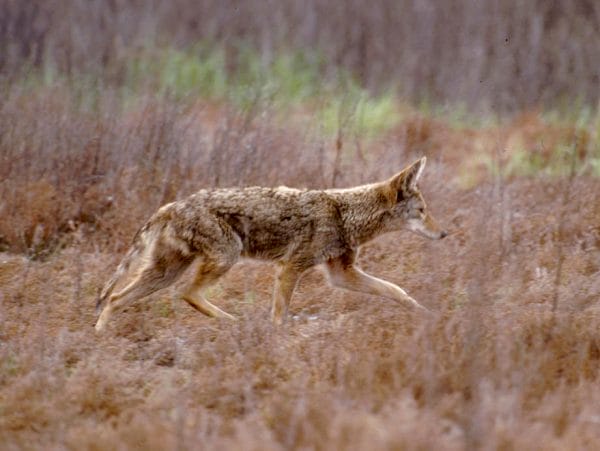 Coyote
Members of the order Carnivora are often true hunters, but some have a varied diet. They are characterized by large canine teeth and fairly small incisors. Most have one litter annually that requires lengthy parental care. Prior to extensive human settlement, Alabama was home to three canine species (family Canidae): The red wolf (Canis lupus) has been extirpated from the state, but foxes and coyotes (Canis latrans) still remain. Other Alabama carnivores include black bears (Ursus americanus) that occasionally enter the extreme north of the state and raccoons (Procyon lotor). Three members of the Mustelidae, or weasel, family reside in the state: the long-tailed weasel (Mustela frenata), the American mink (Neovison vison), and the North American river otter (Lontra canadensis). Alabama is also home to two species of skunk (family Mephitidae), the striped skunk (Mephitis mephitis) and the eastern spotted skunk (Spilogale putorius), and one type of wild cat (family Felidae): the bobcat (Felis rufus). The once-common cougar (Puma concolor) has been extirpated from the state. Three other carnivore species have been sighted in Alabama, but only once each—the California sea lion (Zalophus californianus), ringtail (Bassariscus astutus), and jaguarundi (Herpailurus yagouaroundi).
Coyote
Members of the order Carnivora are often true hunters, but some have a varied diet. They are characterized by large canine teeth and fairly small incisors. Most have one litter annually that requires lengthy parental care. Prior to extensive human settlement, Alabama was home to three canine species (family Canidae): The red wolf (Canis lupus) has been extirpated from the state, but foxes and coyotes (Canis latrans) still remain. Other Alabama carnivores include black bears (Ursus americanus) that occasionally enter the extreme north of the state and raccoons (Procyon lotor). Three members of the Mustelidae, or weasel, family reside in the state: the long-tailed weasel (Mustela frenata), the American mink (Neovison vison), and the North American river otter (Lontra canadensis). Alabama is also home to two species of skunk (family Mephitidae), the striped skunk (Mephitis mephitis) and the eastern spotted skunk (Spilogale putorius), and one type of wild cat (family Felidae): the bobcat (Felis rufus). The once-common cougar (Puma concolor) has been extirpated from the state. Three other carnivore species have been sighted in Alabama, but only once each—the California sea lion (Zalophus californianus), ringtail (Bassariscus astutus), and jaguarundi (Herpailurus yagouaroundi).
Insectivores (Order Insectivora)
 Northern Short-Tailed Shrew
Alabama is home to two types of insectivore: shrews (family Soricidae) and moles (family Talpidae). None of the five species of shrew that reside in the state are well known biologically, and all are threatened. The pygmy shrew (Sorex hoyi) is of particular concern. The northern short-tailed shrew (Blarina brevicauda) is found statewide. The least shrew (Cryptotis parva) and southeastern shrew (Sorex longirostris) also occur throughout the state in a variety of habitats. The southern short-tailed shrew (Blarina carolinensis) and pygmy shrew, about which little is known, are found only in the northeast corner of the state. Shrews occupy woodlands and grasslands, produce an annual litter of six or seven young, and eat insects, snails, fungi, and plants.
Northern Short-Tailed Shrew
Alabama is home to two types of insectivore: shrews (family Soricidae) and moles (family Talpidae). None of the five species of shrew that reside in the state are well known biologically, and all are threatened. The pygmy shrew (Sorex hoyi) is of particular concern. The northern short-tailed shrew (Blarina brevicauda) is found statewide. The least shrew (Cryptotis parva) and southeastern shrew (Sorex longirostris) also occur throughout the state in a variety of habitats. The southern short-tailed shrew (Blarina carolinensis) and pygmy shrew, about which little is known, are found only in the northeast corner of the state. Shrews occupy woodlands and grasslands, produce an annual litter of six or seven young, and eat insects, snails, fungi, and plants.
The eastern mole (Scalopus aquaticus) is the only mole found in Alabama. It occurs throughout the state, spending most of its life underground. Moles generally give birth to an annual litter of about four young, and their diet includes earthworms, insects, other invertebrates, and plants.
Rabbits and Hares (Order Lagomorpha)
 Marsh Rabbit
Originally classified among the rodents, rabbits and hares, called lagomorphs, are distinct because they have two sets of incisors, one behind the other (the top pair is large and constantly growing, the second pair lacks cutting edges). Lagomorphs also practice coprophagy, meaning that they eat their own droppings, thus maximizing the nutrients that they get from vegetation. They reproduce quickly, producing several litters per year, each containing between two and seven young. Alabama is home to four types of lagomorphs, all rabbits of the genus Sylvilagus. The swamp rabbit (S. aquaticus) and eastern cottontail (S. floridanus) are found statewide and are not of special conservation concern. The Appalachian cottontail (S. obscurus) is found only in northern Alabama and is a threatened species, as is the marsh rabbit (S. palustris).
Marsh Rabbit
Originally classified among the rodents, rabbits and hares, called lagomorphs, are distinct because they have two sets of incisors, one behind the other (the top pair is large and constantly growing, the second pair lacks cutting edges). Lagomorphs also practice coprophagy, meaning that they eat their own droppings, thus maximizing the nutrients that they get from vegetation. They reproduce quickly, producing several litters per year, each containing between two and seven young. Alabama is home to four types of lagomorphs, all rabbits of the genus Sylvilagus. The swamp rabbit (S. aquaticus) and eastern cottontail (S. floridanus) are found statewide and are not of special conservation concern. The Appalachian cottontail (S. obscurus) is found only in northern Alabama and is a threatened species, as is the marsh rabbit (S. palustris).
Ungulates (Order Artiodactyla)
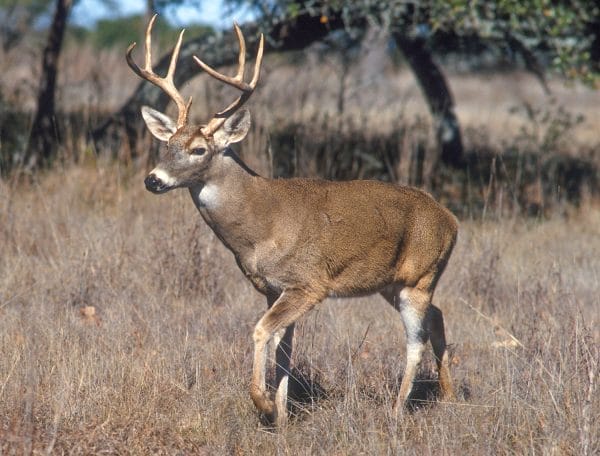 White-tailed Buck
Most of the ungulates in Alabama belong to the deer family (family Cervidae). The state is home to large populations of the white-tailed deer (Odocoileus virginianus). A small population of fallow deer (Dama dama), native to Europe, was established in 1925 at the Bankhead National Forest, and a wild population was established near Miller’s Ferry (Wilcox County) in the 1930s. Rocky Mountain elk (Cervus elaphus) were found in most of the state, but these populations were introduced from Jackson Hole, Wyoming, and the last known elk was killed in 1921. People’s intolerance of severe crop depredation, poaching, and disease precluded the establishment of new herds. The eastern subspecies, C. elaphus canadensis, was probably found throughout the state 2,500 years ago. There is also a sizeable population of feral swine (Sus scrofa), introduced by European settlers, which are aggressive and environmentally destructive competitors of native fauna. Until the late nineteenth century, American bison (Bison bison) inhabited grasslands across the state, but the species was exterminated by overhunting.
White-tailed Buck
Most of the ungulates in Alabama belong to the deer family (family Cervidae). The state is home to large populations of the white-tailed deer (Odocoileus virginianus). A small population of fallow deer (Dama dama), native to Europe, was established in 1925 at the Bankhead National Forest, and a wild population was established near Miller’s Ferry (Wilcox County) in the 1930s. Rocky Mountain elk (Cervus elaphus) were found in most of the state, but these populations were introduced from Jackson Hole, Wyoming, and the last known elk was killed in 1921. People’s intolerance of severe crop depredation, poaching, and disease precluded the establishment of new herds. The eastern subspecies, C. elaphus canadensis, was probably found throughout the state 2,500 years ago. There is also a sizeable population of feral swine (Sus scrofa), introduced by European settlers, which are aggressive and environmentally destructive competitors of native fauna. Until the late nineteenth century, American bison (Bison bison) inhabited grasslands across the state, but the species was exterminated by overhunting.
Opossums (Order Didelphimorphia)
 Virginia Opossum
The opossum is North America’s only marsupial and probably diverged from ancestral South American marsupials around the time of the dinosaurs. It should not be confused with the possums, which are native to Australia, New Guinea, and Sulawesi, and are distant relatives of opossums. Didelphis virginiana, the only species of opossum resident in Alabama, is among many New World species of Didelphimorphs and is found throughout much of North America. Opossums have gray fur, triangular heads, and long, pointed noises. Opossums live in deciduous forests, open woods, marshes, swamps, and farmlands and spend much of their time in trees. They are omnivorous and can have up to three litters a year containing 25 young each, though mothers usually raise between eight and 13. Young opossums crawl into the mother’s pouch shortly after birth and suckle for about two months. Opossums are famous for pretending to be dead in order to avoid predators, a practice that has come to be called “playing possum.”
Virginia Opossum
The opossum is North America’s only marsupial and probably diverged from ancestral South American marsupials around the time of the dinosaurs. It should not be confused with the possums, which are native to Australia, New Guinea, and Sulawesi, and are distant relatives of opossums. Didelphis virginiana, the only species of opossum resident in Alabama, is among many New World species of Didelphimorphs and is found throughout much of North America. Opossums have gray fur, triangular heads, and long, pointed noises. Opossums live in deciduous forests, open woods, marshes, swamps, and farmlands and spend much of their time in trees. They are omnivorous and can have up to three litters a year containing 25 young each, though mothers usually raise between eight and 13. Young opossums crawl into the mother’s pouch shortly after birth and suckle for about two months. Opossums are famous for pretending to be dead in order to avoid predators, a practice that has come to be called “playing possum.”
Armadillos (Order Xenarthra)
 Nine-Banded Armadillo
The nine-banded armadillo (Dasypus novemcinctus mexicanus) is the only subspecies of this family in Alabama, and in North America generally. Armadillos have long snouts and hard armor-like plating on their backs and heads made of dermal bone, which is essentially ossified skin. Their tails are encased in bony rings. They prefer moderately moist dirt because of their propensity for digging burrows for shelter, and they generally eat insects and other invertebrates. Armadillos typically breed in the summer and give birth to identical quadruplets after an eight- or nine-month gestation period. Young become self sufficient at three to four months of age, and sexual maturity occurs at one to two years of age. Armadillos cannot tolerate freezing weather, and so the nine-banded armadillo can be found statewide in Alabama and other southeastern states except in the mountainous northern sections of these states. Probably as a result of climate change, the armadillo’s range has expanded northward recently. Nine-banded armadillos do not have any special conservation considerations.
Nine-Banded Armadillo
The nine-banded armadillo (Dasypus novemcinctus mexicanus) is the only subspecies of this family in Alabama, and in North America generally. Armadillos have long snouts and hard armor-like plating on their backs and heads made of dermal bone, which is essentially ossified skin. Their tails are encased in bony rings. They prefer moderately moist dirt because of their propensity for digging burrows for shelter, and they generally eat insects and other invertebrates. Armadillos typically breed in the summer and give birth to identical quadruplets after an eight- or nine-month gestation period. Young become self sufficient at three to four months of age, and sexual maturity occurs at one to two years of age. Armadillos cannot tolerate freezing weather, and so the nine-banded armadillo can be found statewide in Alabama and other southeastern states except in the mountainous northern sections of these states. Probably as a result of climate change, the armadillo’s range has expanded northward recently. Nine-banded armadillos do not have any special conservation considerations.
Further Reading
- Best, Troy L., and Julian L. Dusi. Mammals of Alabama. Tuscaloosa: University of Alabama Press, 2014.
- Brown, L. N. A Guide to the Mammals of the Southeastern United States. Knoxville: University of Tennessee Press, 1997.
- Thompson, B. C., and J. A. Chapman. Wild Mammals of North America: Biology, Management, and Conservation. 2nd edition. Baltimore: Johns Hopkins University Press, 2003.
